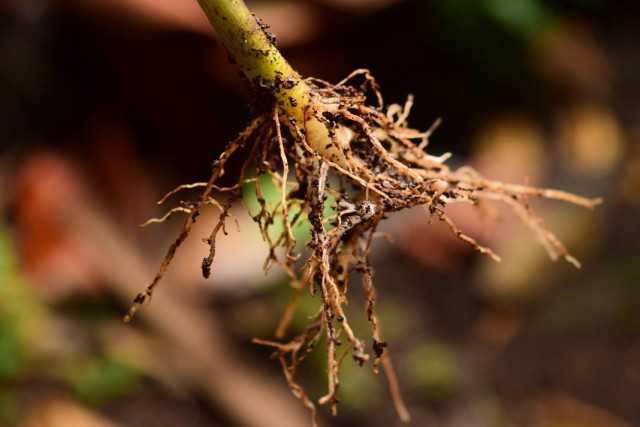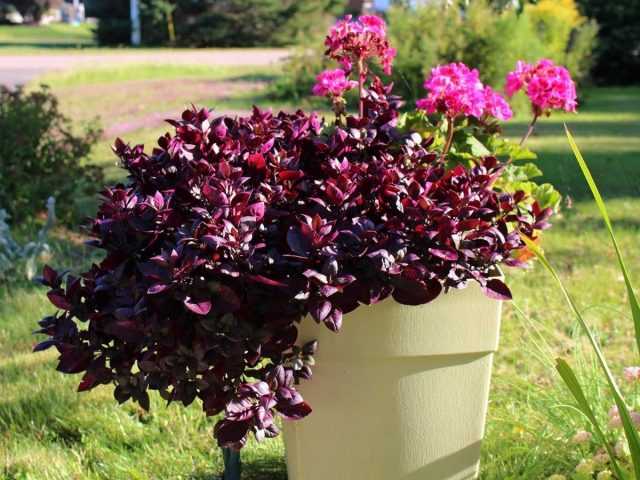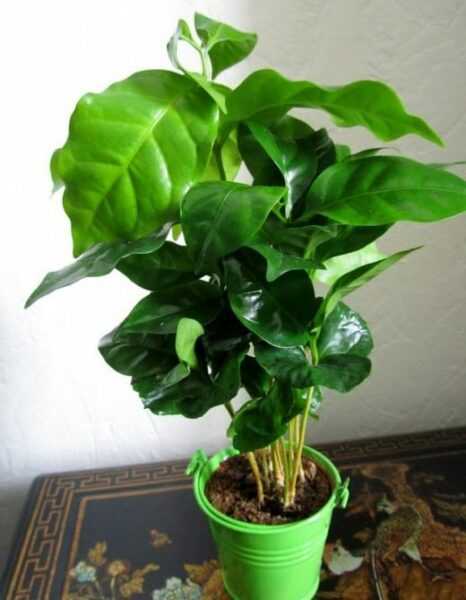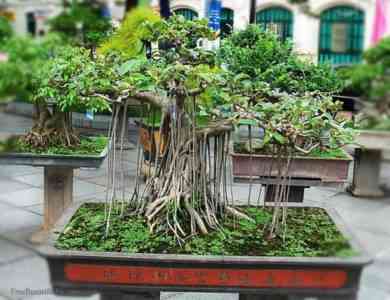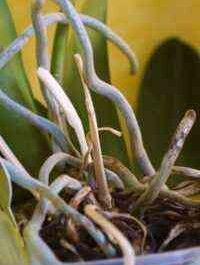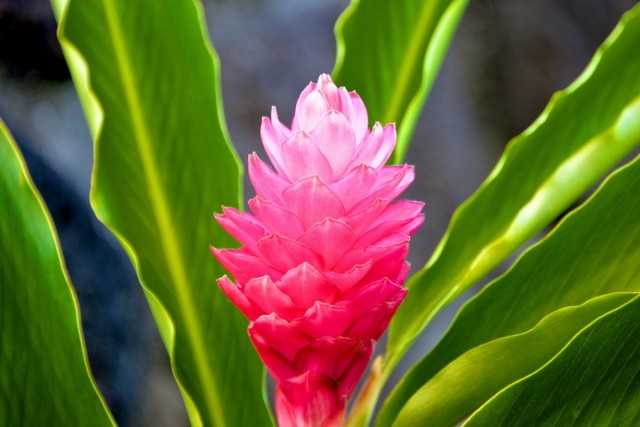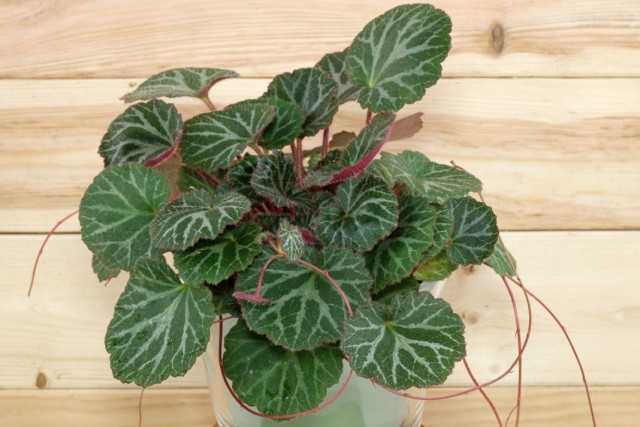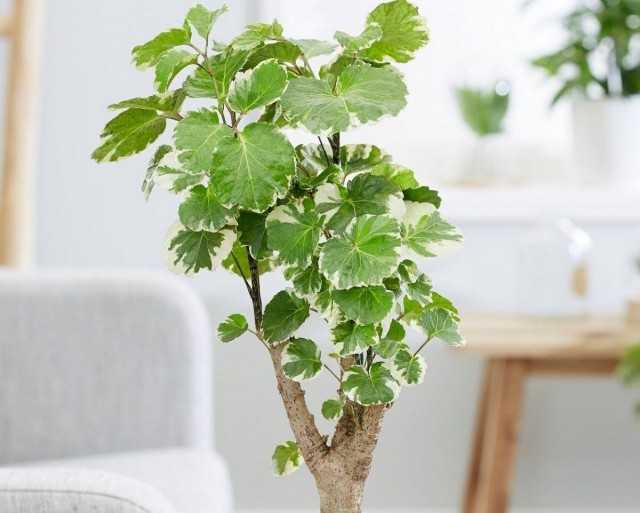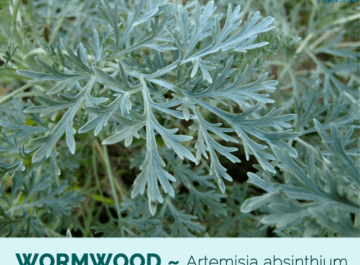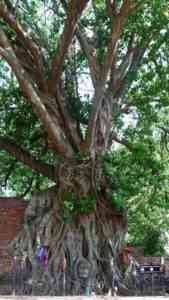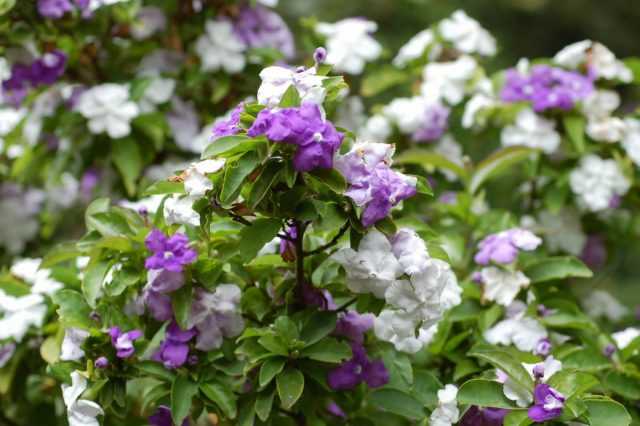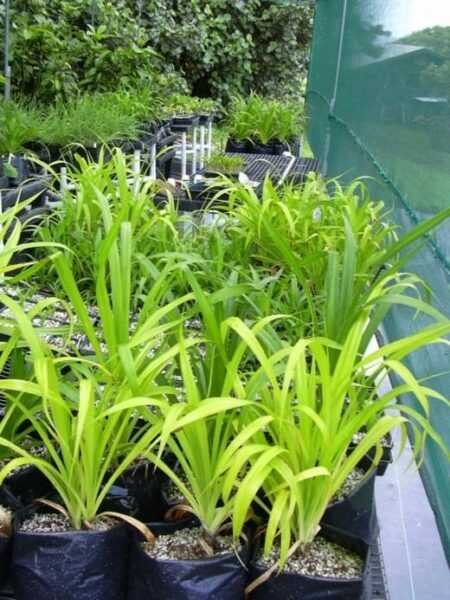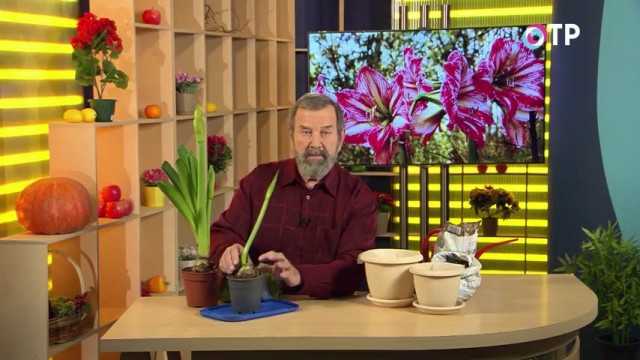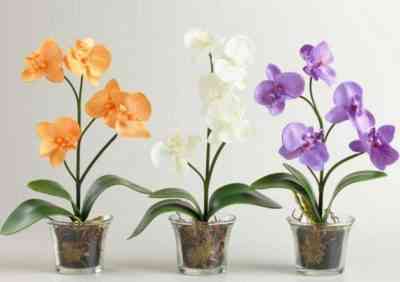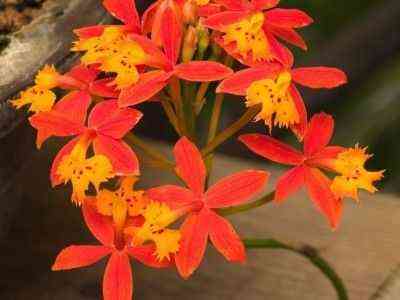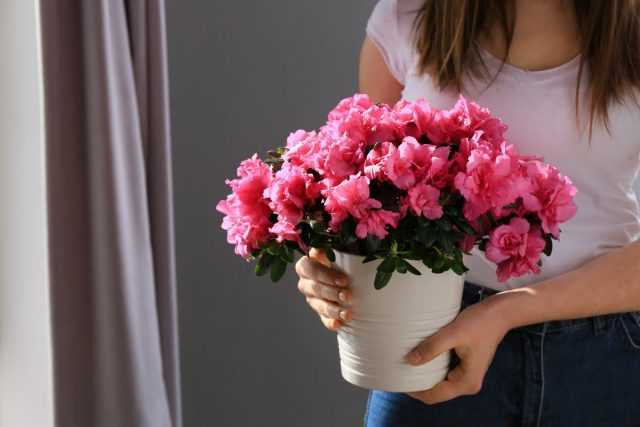The name of this amazing plant is still associated with the princess from the legendary stellar movie saga. And to her liking, Leey is a real aristocrat. Demanding, difficult, sensitive to adverse conditions, she reveals her beauty only in caring hands. But on the other hand, her beauty is unique. This large plant with a translucent crown of carved leaves boasts unique colors and textures. And although Leia has not yet managed to join the number of the most popular cultures, her modern-daring beauty is attracting more and more fans.
Leea amabilis
Contents:
Opening and airy leeya
If you are looking for a large woody or shrub plant that literally looks like weightless and airy, then leeya is for you. It is simply impossible to describe it in any other way. The translucent, patterned, incredibly exquisite crown of this representative of rather rare indoor plants is incomparable. And the leeya itself, in its decorativeness and structure, simply does not know competitors. But despite this unique airiness, Leey is just beginning its path to fame. The plant is not found on every corner, but it is still worth looking for.
Leeya (Leea) Is a medium-sized genus of ornamental deciduous plants, represented in indoor culture by only four species. Lei belong to the subfamily of the same name – Lei (Leeaceae) of the family Grape (Vitaceae), which, apart from them, does not include any more genus of plants. And already this special classification directly indicates how unique the plant itself is. Leia was named after the legendary 18th century Scottish gardener James Lee. Plants are found naturally in Malaysia, India and the Philippine Islands.
Without exception, all representatives of the Leeya genus are evergreen highly decorative shrubs with a surprisingly translucent, lacy crown. Lei are up to one and a half meters high, but most indoor leis are limited to approximately one meter in height. Shoots are thin, strong, erect, densely branching from the base, creating a wide and lacy crown even at the bottom. The bark is shiny, very rarely rough. Leia leaves are pinnate, with lanceolate-pointed lobes. The large teeth along the edge make the greenery of the plant even more carved.
Leaves sit on the shoots quite rarely, due to which the feeling of that translucent lace is created. But the main advantage of the foliage of this indoor shrub is still color. A bright glossy shine emphasizes the rare olive or bluish tones of green, which in many lei are replaced by purple, bronze and copper tints. Any color of the plant evokes associations with precious metals. Many people compare the leaves of Leia with holly, and there is a distant resemblance, although Leia reveals much more of its individual features upon closer acquaintance.
Leia bloom is considered a rare phenomenon, but under favorable conditions, adult plants can please them. And although this plant is classified as a purely decorative deciduous plant, the flowering of the leea and the fruits that are tied after it are mesmerizing. Thick, delicate and very beautiful shields of small pinkish flowers seem almost jewelry on the plant. But the main show begins when the fruits begin to ripen on the lee: the dark red berries in the corymbose fruit are somewhat reminiscent of a decorative version of mountain ash and look very impressive.
The most popular plant of the genus Lei is Leeya red (Leea rubra, we love to call her Leia bright red — Leea coccinea, although this name is synonymous with a completely different Leia – Guinean). An evergreen shrub with not very active branching, flaunting easily recognizable feathery leaves, consisting of symmetrical lanceolate lobes from 5 to 10 cm long. Large teeth along the edge are combined with light waves, which only enhances the reflections of the glossy surface. The tip of the lobes is not just pointed, but needle-shaped or spiny-elongated. On the cuttings and leaves, hydatodes are located – special stomata or water glands that can secrete pink or white crystallizing drops of moisture. The inflorescences of the red leea are corymbose, elegant, rise above the shoots; upon closer examination, one can appreciate both rare shades of pink color and the beauty of yellow stamens.
The other three types of leu are much less common, although they also deserve attention.
Leah of Guinea (Leea guineensis) – the only species not with feathery leaves. Evergreen and very beautiful, this beauty boasts complex leaves up to 50 cm long, consisting of large lanceolate lobes with a prominent “ribbed” surface and symmetrical lateral veins. Young leaves of this leea are bronze, only gradually become more green and repainted in dark olive, but still remain very beautiful. Brick lace inflorescences are very effective and literally glow like a necklace against the background of large leaves.

Leeya is nice (Leea lovable) Is a plant with variegated large leaves. It seems as if it releases individual huge leaves, but in reality they are only fractions of large complex leaves. The fine teeth along the edge completely match the pattern of the side veins on the sheet. The glossiness is not as pronounced as in other species, but its leaves have a more interesting wrinkled texture. The dark green color, brighter on young leaves, is complemented by a strip of white dots along the central vein and white specks on each lateral vein, creating a kind of dots along the edge of the leaves. The plant looks very colorful. The purple back of the leaf plates only adds beauty to the plant.
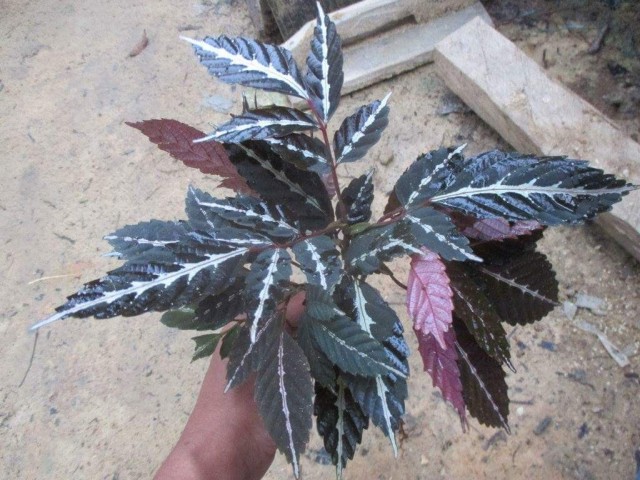
Scientists all over the world cannot determine the status of one plant. Leeya Burgundy (Leea sambucina Burgundy, or simply Leea Burgundi) is sometimes called one of the plant varieties, sometimes a separate form, sometimes even a separate species, although the status of the Leea sambucina species itself remains uncertain. Outwardly, the plant almost completely repeats the features of the red leea, only with a different color. While Leeya red boasts a grayish-gray “metallic” effect, Leeya Burgundy offers slightly more noble effects. Bronze-leaved Burgundy is an evergreen plant that retains all the lacy grace inherent in red, with an amazing color of greenery. The shoots of the plant are red, shiny, the inflorescences are also red.
Leey care at home
How such a unique plant has not yet become a star and a universal favorite is, of course, simple to understand: Leeya is far from being a “simpleton” in character. But her beauty fully compensates for her love of high humidity. Moreover, leeya does not require non-standard temperatures even in winter. Many of the much more popular and boring houseplants are far more demanding. And all that is needed is a modest constant care and environmental stability.
Lighting for lei
This Indian beauty, even in room culture, remains a photophilous plant. Direct rays of the sun leave burns on the leaves, affect the color, and the plant is more comfortable in diffused lighting. But even in light shading, growth is disturbed and the color palette of greenery changes. True, such light-loving is characteristic only of varieties with reddish, gray-gray, metallic effects. If Leia has “boring” green leaves and they do not have those precious tints, then such specimens can be displayed in partial shade of any intensity.
In winter, the reduction in natural lighting must be compensated for by rearranging to lighter places or artificial lighting.
Leia can be grown both in living rooms and in the bathroom, where its airy beauty against the background of wall decoration always looks amazingly jewelry. True, it can be placed in the bathroom only if there is a sufficiently large window.
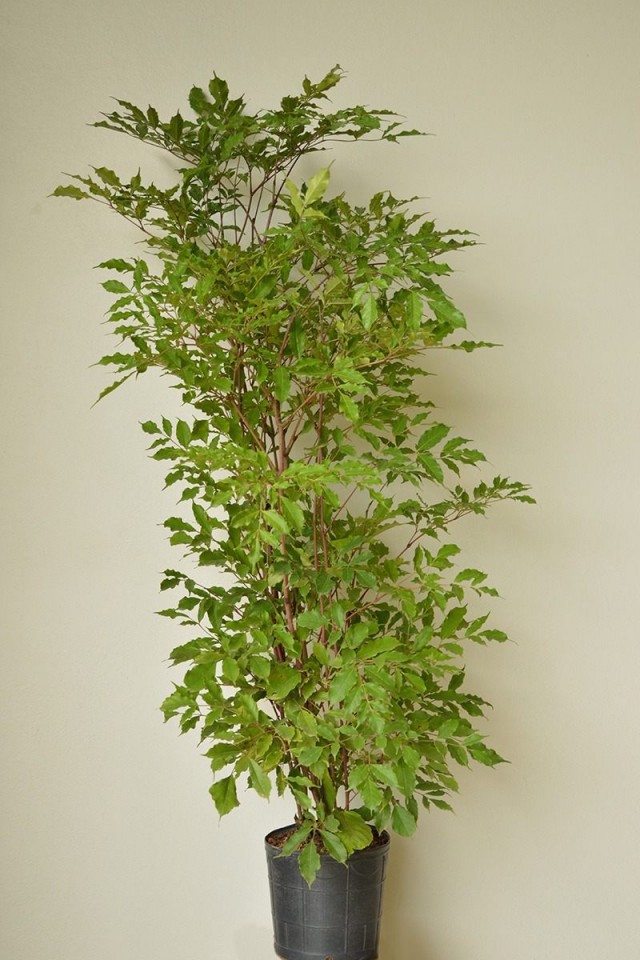
Comfortable temperature
Unlike many exotics, Leeya does not need a cool wintering, strict temperature control, does not suffer from heat, provided that a constant air humidity is maintained. All you need to take care of is limiting the lower temperature readings to the “limit” 16 degrees. Below this indicator, the temperature should not fall even in winter. Leeya feels great in normal room conditions throughout the year. Optimum temperatures are from 20 to 25 degrees.
Leia loves a stable environment. The plant must be protected from drafts, you should not take it out into the open air, expose it to any sudden changes in temperature.
Watering and air humidity
Like many Tropicans, Leeya prefers stable soil moisture. The more uniform the irrigation regime and the more constant the soil moisture indicators, the better. Waterlogging and drought are equally dangerous. Watering for this plant is carried out often, but not abundantly, after the topsoil has dried out, which allows you to maintain as constant moisture as possible. In winter, especially if temperatures drop below 20 degrees Celsius, watering is reduced for Leia and these procedures are carried out 1-2 days after the top layer of the soil dries up.
For the normal development and preservation of the decorative foliage, the leee will need high air humidity. But thinking that the leey will have to be transferred to a winter garden or a flower showcase is a big mistake. This plant feels great in ordinary living rooms, it is just that additional measures to humidify the air need to be introduced into the care. Moreover, there is no need to look for combined methods, it is enough either to put the plant on a pallet with wet expanded clay, pebbles, rubble (so that the water does not touch the bottom of the pot), or just carry out regular spraying.
Leeya feels great when working with autowatering systems and in hydroponics.
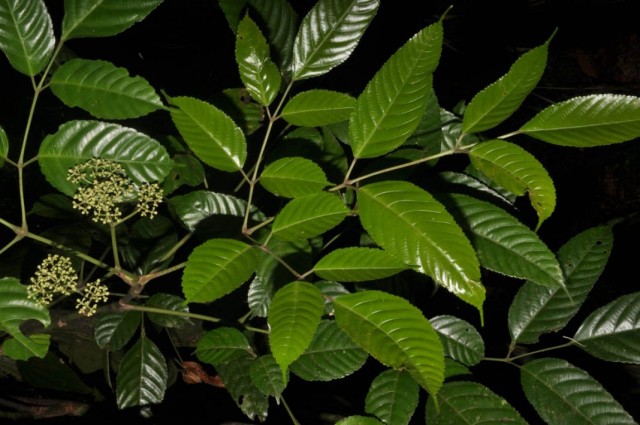
Top dressing for leeya
Fertilizers for this plant are selected from a number of complex, containing both mineral and organic components of preparations designed specifically for ornamental deciduous plants. In universal fertilizers there is no required leee balance of microelements.
The frequency of feeding is standard. They are brought in 1 time in 14-20 days.
There is no need to feed this evergreen in the cold season. It is enough to apply fertilizers in the spring-summer period, from the moment of the beginning of active growth to its termination.
Transplant and substrate
Plants are transplanted annually only at a very young age, when Leia is actively growing both the crown and rhizome. Adult bushes are reloaded twice less often (if there are no signs of complete development of the substrate, then the procedure can be carried out 1 time in 3 years). In the absence of a transplant, it is better to change the topsoil to a fresh one, but without affecting the roots of the plant. The plant tolerates emergency transshipments in large containers well: as soon as you notice signs of growth arrest or crawling out of the roots from the drainage holes, regardless of the season, feel free to transplant this beauty. Planned transplants are carried out in the spring.
The substrate for leuja should be quite standard – loose, permeable, light. The plant feels great in universal ready-made soil mixes. If you are mixing the soil yourself, combine the sand and leafy soil in equal parts and add twice the turf soil.
For this, the plants are not transplanted, but trans-shipped, avoiding contact with the roots. The middle layer of drainage is laid at the bottom of the container.
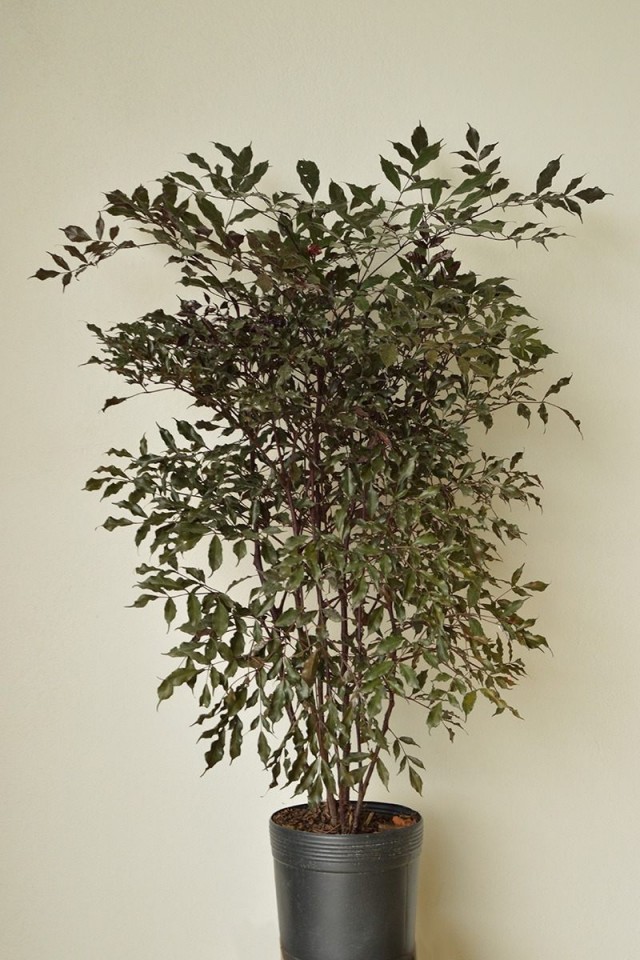
Diseases and pests of leea
Leia cannot boast of enviable resilience. Mealybugs and aphids are very fond of her, and in case of untimely isolation from diseased plants in the collection, the leey will certainly suffer. Occurs with waterlogging and gray rot. It is better to deal with problems immediately by treatment with insecticides and fungicides.
Common growing problems:
- lack of flowering, slow growth, pale foliage and gradual yellowing of the lower leaves with strong shading or poor feeding;
- falling buds in the cold or when overflowing;
- wilting and dying off of leaves in the cold, with improper watering;
- curling and yellowing of leaves when watering with cold water or drought;
- yellowing of leaves in dry air.
Lei breeding methods
Cuttings (semi-lignified shoots are cut in summer into fragments with one leaf and one internode, all cuts are made obliquely, at an angle of 45 degrees). Cuttings are planted after treatment with growth stimulants in a regular substrate for lei, and covered with a cap on top. Rooting is carried out at a temperature of 20 to 25 degrees with regular spraying and airing.
Air layering (an incision is made in the internodes, wrapped in moss or substrate using standard technology).
Seeds. It is very difficult to get them, but if you managed to collect them yourself or purchase them, then the seeds are sown into a wet substrate, lightly sprinkling them on top with a thin layer of sand or not sprinkling them at all. Crops are regularly sprayed, kept under a hood or foil with frequent ventilation, in a lighted place. Lei seeds are germinated at a temperature of 22 degrees Celsius. Plants do not dive, they are allowed to release a second or third true leaf, and then they are planted 2-3 in small individual containers and grown as adult lei.


